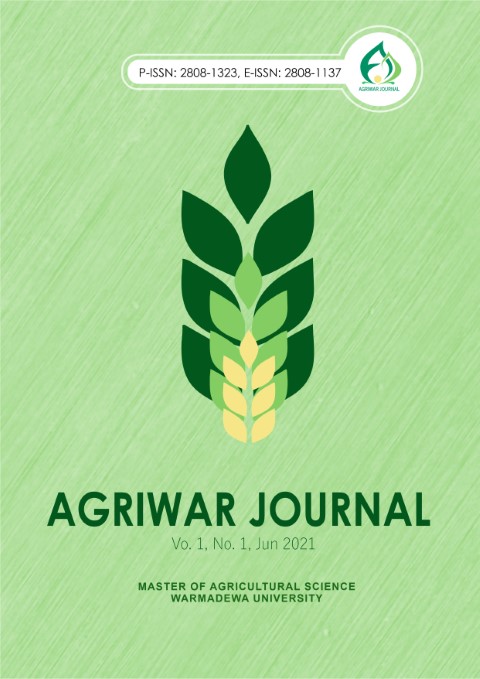Level of Community Participation in Conducting Waste Sorting in Semarapura City
Abstract
Waste is unwanted residual material after the end of a process. The problem of waste has become a global issue that is a threat to the environment if it is not properly managed. Based on data from the Klungkung Regency Environmental Service in 2019, from four sub-districts in Klungkung Regency namely Dawan, Banjarangkan, Klungkung, and Nusa Penida, the volume of waste per day is more than 115,000 kg/person/day from a population of more than 230 thousand people, when compared production average waste production weighing 0.5 kg per person/day. Meanwhile, in terms of composition, the highest amount of waste is organic waste (68%), dust, rock and the like (8%), glass and plastic bottles 7%, followed by sheet plastic 5% and plastic 4%. The results of the analysis and depiction on the graph of the survey results were 4 (four) villages that had a high percentage of segregation, namely Semarapura Kauh Village (83.33%), followed by Semarapura Tengah (82.23%), followed by Semarapura Kangin Village (78.87. %) and Semarapura Kaja (75.21%). The results of this study prove that two locations have a very low level of sorting waste (less than 50%), namely Jempriring street in Semarapura Klod (47.61%), Rama street (42.11%), and Puputan street in Semarapura Kangin (44.73%). From this research, it can be concluded that public awareness of sorting waste in the two locations is still lacking.
 Abstract viewed = 151 times
Abstract viewed = 151 times
 PDF downloaded = 120 times
PDF downloaded = 120 times




